#International Children's Day 2020
Text
꧁༺ Nikki’s Diary ༻꧂



꧁༺ Nikki’s Diary ༻꧂
P.1 :: [ International Children's Day 2020 ] 👶👧🏻🧒🏼👦🏻🎈🍭🧸
This Weibo can only be seen by cute people.
Lovely children and big friends ~ Happy Children's Day
P.2 :: [ Dragon Boat Festival 2020 ] 🐲🐉🛶
The air in the ancient town is filled with the fragrance of zongzi leaves, and I accidentally bought a lot of zongzi ><
P.3 :: ⭐️🌟💫✨
There are so many stars in the night sky, and how many wishes are placed on each star?
What wishes have you made to the stars? Did it come true?


P.1 :: [ วันเด็กสากล 2563 • 儿童节 • Értóng jié ] 👶👧🏻🧒🏼👦🏻🎈🍭🧸
โพสต์ Weibo นี้มีแต่คนน่ารักเท่านั้นที่เห็น
เด็กๆ ที่น่ารักและผองเพื่อนตัวโตทั้งหลาย สุขสันต์วันเด็ก
[ 01.06.2020 ]
P.2 :: [ เทศกาลเรือมังกร 2563 • 端午 • Duānwǔ ] 🐲🐉🛶
อากาศในเมืองโบราณอบอวลไปด้วยกลิ่นหอมของใบ zongzi และฉันบังเอิญซื้อ zongzi มามากมาย ><
[ 26.06.2020 ]
P.3 :: ⭐️🌟💫✨
มีดวงดาวมากมายบนท้องฟ้ายามค่ำคืน และดวงดาวแต่ละดวงขอพรได้กี่ดวง?
คุณขอพรอะไรกับดวงดาว? มันเกิดขึ้นจริงหรือไม่?
[ 23.06.2020 ]

#Nikki’s Diary#Nikki’s Weekend#Nikki’s Important Day#International Children's Day#Dragon Boat Festival#Nikki’s Diary 2020#Nikki’s Weekend 2020#Nikki’s Important Day 2020#International Children's Day 2020#Dragon Boat Festival 2020#Shining Nikki#Nikki 3D#Nikki Up2U 4#Nikki 4#Orangecatty#Nikki Diary Thailand#06.2020
6 notes
·
View notes
Video
youtube
10 Worst Things About The Trump Presidency
Donald Trump left office with the lowest approval rating of any president ever. But some people now seem to be suffering from amnesia.
Let me jog your memory. Here are 10 Worst Things About the Trump Presidency — in no particular order.
#1. Trump fueled division and sparked a record uptick in hate crimes.
#2. Murder went way up under Trump. He presided over the largest ever single-year increase in homicides in 2020. A number of factors might have contributed to that, but a big one is…
#3. Gun sales broke records under Trump, who has bragged about how he “did nothing” to restrict guns as president in spite of…
#4. Under Trump, America suffered more than 1,700 mass shootings.
#5. Trump said there were "very fine people" among the neo-Nazis in Charlottesville.
I’m halfway to ten. If you think I’m missing something big, leave it in the comments.
#6. Trump allied himself with the Proud Boys, a violent hate group who helped orchestrate the Jan 6 Capitol attack.
#7. Trump’s not wrong when he says…
TRUMP: I got rid of Roe v. Wade.
It is entirely because of Trump’s judicial appointments that 1 in 3 American women of childbearing age now lives in states with abortion bans.
#8. One of Trump’s Supreme Court justices was Brett Kavanaugh, a man accused of sexual assault by multiple women.
#9. Trump’s White House interfered in the FBI’s investigation of Brett Kavanaugh’s alleged sexual assaults.
And now: #10. Trump has been convicted of committing 34 felonies while in office. The criminally false business filings he got convicted for in New York? All of them were committed while he was president.
I’m sorry, did I say the 10 Worst Things About the Trump Presidency? I meant 15.
#11. Trump’s failed pandemic response is estimated to have led to hundreds of thousands of needless deaths. By the time Trump left office, roughly 3,000 Americans were dying of covid every day. That’s a 9/11-scale mass casualty event every single day. How did Trump screw up so badly?
#12. Trump’s White House discarded the pandemic response playbook that had been assembled by the Obama administration.
#13. Trump disbanded the National Security Council’s pandemic response team.
#14. Trump repeatedly lied about the danger of covid, saying it was no worse than the flu or that it would go away on its own.
But behind closed doors, Trump admitted he knew covid was deadly.
#15. Trump promoted fake covid cures like hydroxychloroquine and even injecting people with disinfectants.
After Trump’s “disinfectant” remarks, poison control centers received a spike in emergency calls.
That’s fifteen things. Should I keep going? Ok, I’ll keep going. The 20 Worst Things About the Trump Presidency.
#16. Trump presided over a net loss of 2.9 million American jobs — the worst recorded jobs numbers of any U.S. president in history.
#17. Trump profited off the presidency, making an estimated $160 million from foreign countries while he was president.
#18. Trump also billed the Secret Service over $1 million for the privilege of staying at his golf clubs and other properties while they protected him. That’s your money!
#19. Trump caused the longest government shutdown in U.S. history when he didn’t get funding for his border wall, which he said Mexico was going to pay for.
#20. Under Trump, the national debt increased by about 40% — more than in any other four-year presidential term — largely because of his tax cuts for the rich and big corporations.
You didn’t really think I was stopping at 20, did you? We’re going to 25 —
#21. Trump separated more than 5,000 children from their parents at the border, with no plan to ever reunite them, putting babies in cages.
#22. The Muslim Ban. Yes, Trump really did try to ban Muslims from entering the country.
#23. Trump sparked international outrage by moving the American Embassy in Israel to Jerusalem while closing the U.S. mission to Palestine.
#24. Trump tasked his son-in-law Jared Kushner with drafting a potential Middle East “peace plan” with zero Palestinian input.
#25. And finally, Trump recognized Israel’s occupation of the Goh-lahn Heights, which is considered illegal under international law.
So there you have it, folks: The 25 Worst — Wait a minute. Wait a minute. Did I mention the impeachments? We’ve got to do the impeachments. Let’s go to 30.
#26. Trump broke the law by trying to withhold nearly $400 million of U.S. aid for Ukraine in an effort to extort a personal political favor from Ukraine’s Pres. Zelensky. Trump wanted Zelensky to interfere in the 2020 election by announcing an investigation into the Bidens. Delaying this aid to Ukraine weakened Ukraine and strengthened Russia.
#27. Trump personally attacked and ruined the careers of everyone who stood in the way of his illegal Ukraine scheme, including Ambassador Marie Yovanovitch and Lt. Colonel Alexander Vindman.
#28. To cover up the scheme, Trump ordered the White House and State Department to defy congressional subpoenas.
#29. For these reasons, on December 18, 2019, Trump became the third U.S. president to be impeached. He was charged with Abuse of Power and Obstruction of Congress.
#30. Even while he was being investigated for trying to get Ukraine to interfere in the U.S. election, Trump publicly called for China to interfere in the election.
So those are the 30 Worst Things —
I’ll go to 35.
#31. Long before Election Day, Trump started making false claims that the election would be rigged.
#32. After losing, Trump falsely claimed the election was stolen, even though his own inner circle, including his campaign manager, White House lawyers, and his own Justice Department and attorney general told him it was not.
#33. Trump kept telling his Big Lie even after more than 60 legal challenges to the election were struck down in court, many by Trump-appointed judges.
#34. Trump ordered the Department of Justice to falsely claim that the election “was corrupt.”
#35. Trump and his allies used threats to pressure state leaders in Arizona and Georgia to falsify the election results.
We may go to 40.
#36. When none of the previous schemes worked, Trump and his allies produced fake electoral votes cast by fake electors in multiple swing states. His former White House chief of staff and Rudy Giuliani are among the many members of his inner circle who have been criminally indicted for this scheme.
#37. Trump tried to bully Vice President Pence into obstructing the certification of the election.
#38. Trump invited a mob to the Capitol on Jan 6 with his “be there, will be wild” tweet.
#39. Sworn testimony alleges that when Trump was warned that members of the crowd were carrying deadly weapons, he ordered security metal detectors to be taken down.
#40. Knowing the crowd had deadly weapons, he ordered them to go to the Capitol and…
TRUMP: …fight like hell.
#41 — Yes, yes, I know, bear with me.
Trump betrayed his oath to defend the nation by doing nothing to stop the Jan 6 violence. Instead, according to witness testimony, he sat and watched TV for hours.
#42. On January 13, 2021, Trump became the only president ever to be impeached twice. This time he was charged with incitement of insurrection. It was a bipartisan vote.
#43. The majority of senators — 57 out of 100 — voted to convict Trump, including 7 Republican senators.
So that’s the two impeachments and the Big Lie, but wait, we haven’t dealt with Russia, right? So we’re going to 50.
#44. In a likely obstruction of justice, Trump pressured then FBI Director James Comey to stop the FBI’s investigation into Trump’s National Security Adviser, Michael Flynn. This was documented in the Mueller report.
#45. When Comey didn’t bend to Trump’s will, Trump fired him.
#46. Trump tried to shut down the Mueller investigation by ordering White House Counsel Don McGann to fire Mueller. McGann refused because that would be criminal obstruction of justice.
#47. When news got out that Trump tried to fire Mueller, Trump repeatedly told McGann to lie — to Mueller, to press, to public — and even create a false document to conceal Trump’s attempt to fire Mueller.
#48. Trump ordered his staff not to turn over emails showing Don Jr. had set up a meeting at Trump Tower before the 2016 election with representatives of the Russian government.
#49. Trump convinced Michael Cohen to lie to Congress about Trump’s plans to build a Trump Tower in Moscow, and Cohen served prison time for lying to Congress.
#50. Trump was not charged for criminal obstruction of justice because it’s the Justice Department’s policy not to indict a sitting president, but more than a thousand former federal prosecutors who served under both Republicans and Democrats, signed a letter declaring there was more than enough evidence to prosecute Trump.
So those are the 50 Worst Things About the Trump Presidency. Now I could go on…
And I will! The 75 Worst Things About the Trump Presidency.
#51. Trump said he’d hire only the best people, but…
His campaign chair was convicted of multiple crimes.
So was one of his closest associates.
His deputy campaign chair pleaded guilty to crimes.
So did his personal lawyer
His National Security Adviser
The Chief Financial Officer of his business
A campaign foreign policy adviser
And one of his campaign fundraisers.
They all committed crimes, and Trump pardoned most of them.
#52. Trump said he’d drain the Washington swamp. But he appointed more billionaires, CEOs, and Wall Street moguls to his administration than any administration in history
#53. Trump intervened to get his son-in-law, Jared Kushner top-secret clearance after he was denied over concerns about foreign influence.
#54. Trump hosted a Russian Foreign Minister to the Oval Office, where Trump revealed top-secret intelligence.
Oh, and Trump’s economic policies!
#55 Trump promised that the average American family would see a $4,000 pay raise because of his tax cuts for the wealthy and big corporations. How’d that work out? Did you get a $4,000 raise? Of course not! Nobody did!
#56. Trump vowed to protect American jobs, but offshoring increased and manufacturing fell.
#57. Trump said he would fix America’s infrastructure, but it never happened. He announced so many failed “infrastructure weeks” they became a running joke.
#58. Trump said he would be “the voice” of American workers, but he filled the National Labor Relations Board with anti-union flacks who made it harder for workers to unionize.
#59. Trump’s Labor Department made it easier for bosses to get out of paying workers overtime, which cheated 8 million workers of extra pay.
#60. Trump repeatedly suggested he might serve more than two terms in violation of the Constitution — and continues to do so.
#61. Trump called Haiti and African nations “shithole” countries.
#62. Trump tried to terminate DACA, which protects immigrants brought to the U.S. as children. Luckily this was struck down by the courts.
#63. Trump called climate change a “hoax.”
#64. Trump pulled out of the Paris Climate Agreement.
#65. Trump rolled back more than 100 environmental protections.
#66. Every budget Trump proposed included cuts to Social Security and Medicare.
#67. Trump tried (and failed) to repeal the Affordable Care Act, which would have resulted in 20 million Americans losing insurance. And striking down the ACA’s protections for the roughly 130 million people with pre-existing conditions could have driven up their insurance premiums or led to a loss of coverage.
#68. Trump made it easier for employers to remove birth control coverage from insurance plans.
#69. By the end of Trump’s term, the number of people lacking health insurance had risen by 3 million.
#70. Trump lied. Constantly. He made 30,573 false or misleading claims while president — an average of 21 a day, according to Washington Post fact-checkers.
#71. Trump allegedly took hundreds of classified documents on his way out of the White House, reportedly including nuclear secrets, which he then left unsecured in various parts of Mar-a-Lago, including a bathroom. He was even caught on tape showing them off to people.
#72. Trump seriously discussed the idea of nuking a hurricane.
#73. When Hurricane Maria hit Puerto Rico, Trump delayed $20 billion of aid and allowed Puerto Rico to be without power for 181 days.
#74. Trump suggested withholding federal aid for California wildfire recovery and said the solution was to “clean” the “floors” of the forest.
#75. Trump pulled out of the Iran deal, placing Iran on a path to developing nuclear weapons.
Honestly, there’s so much more, from exchanging “love letters” with North Korea’s brutal dictator to publicly denigrating a Gold Star military widow and making her cry, to the way he attacked journalists, to late night tweet binges.
Look, I can understand why a lot of people want to block all of this out of their memories. But we cannot afford to forget just how terrible Trump’s time in the White House was for this nation.
And we sure as hell can’t afford to put him back there.
849 notes
·
View notes
Text
🇵🇸🇮🇱 I'm so tired of hearing about Hamas' "war crimes" against "Israeli civilians" even as Occupation Forces are on their 10th or 11th day of straight bombing residential neighborhoods in Gaza.
There is absolutely NOTHING civilian about Israeli settlers. They carry weapons publicly (which Palestinians cannot do) and use their positions of being a protected class under Israeli Law over Palestinians to beat, bully, rape, and murder them with impunity, and with the full backing of the Israeli Occupation Forces and the funding, arming, and training of the occupation forces by the United States Military.
Israeli settlers CHOOSE to bring their families to what is essentially a war zone where only one side has any significant weaponry. If you brought your child to Bakhmut and decided to settle into a home there and your home gets bombed by the Russians, are you blaming the Russians or yourself for knowingly bringing your family into danger?
It's so insane to call Hamas war criminals. You have to have no context for the present conflict to believe that.
For example, Hamas and the Palestinian people of Gaza previously tried non-violent protest in 2020 with the Great March of Return.
Palestinians in Gaza, with the full backing of Hamas, peacefully protested Israeli occupation near the fence that blockades Gaza in.
They had NO WEAPONS. They protested peacefully, non-violently; marching, chanting and singing and waving the Palestinian flag as they resisted Israeli occupation and oppression they've suffered under since the end of WWII.
And what happened?
Israeli Occupation Forces used snipers to gun down men, women and children peacefully protesting near the Israeli occupation fence, shooting civilians from Israeli territory into Gaza.
When the medics showed up to try saving the lives of those who were shot, Israeli Occupation Forces sniped the medics as well, killing many of them and resulting in the deaths of those they were trying to evacuate.
When journalists showed up to record the unprovoked violence, Occupation Forces shot them too, famously killing an Al Jazeera News journalists, Shireen Abu Akleh.
So what exactly are Palestinians supposed to do according to US and Israeli Elites?
The answer, of course, is leave or die. That is the proposition being offered by Israeli Occupation Forces and their Imperialist Western allies.
Leave or die.
So go ahead, call Hamas war criminals and terrorists if you like, but at the very least, remember they tried literally EVERYTHING before launching Operation Al-Aqsa Flood, and just like generations before, they died for trying.
Israeli settlers are NOT civilians. They are Colonialist occupiers ethnically cleansing an entire nation since 1948. Just because all you see of Palestine now are a few small enclaves surrounded by occupied territory, does not mean that "Israeli" territory isn't part of Palestine, it's ALL Palestine.
And Palestinians have an inherent RIGHT under International Law to fight that occupation through violent and non-violent means however they see fit.
Israel itself as a Zionist State is a War Crime.
#FreePalestine #FreeGaza
@WorkerSolidarityNews
#palestine#palestine news#hamas#war crimes#israel news#gaza#gaza news#great march of return#gaza strip#free gaza#free palestine#palestinian resistance#the resistance#israeli occupation#occupation#israeli apartheid#israel#apartheid#news#war#politics#geopolitics#war news#world news#global news#international news#middle east#resistance#WorkerSolidarityNews#opinion
198 notes
·
View notes
Text
Many thousands of civilians have reportedly been killed. The number of people displaced from their homes is well into seven figures. Densely populated urban areas have been reduced to rubble. Supplies of electricity, food, and water have been cut off. Hospitals have come under attack. Many of those fleeing, injured, or dead are children.
I could be describing Russia’s full-scale invasion of Ukraine, which has raged on for almost two years now, or the terrible human costs of Israel’s military offensive in the Gaza Strip following the horrific Hamas attacks on Oct. 7. But I am referring to a conflict that has received much less international attention: the civil war in Sudan that broke out last April. Even as one lethal war captures the world’s attention, others roil on in the background.
Unsurprisingly, given its geopolitical significance, Ukraine has received considerable attention in the West, where leaders have been quick to condemn Russia’s war crimes. The new conflict in the Middle East has dominated headlines over the past couple of months. But Sudan’s crisis has gone woefully underdiscussed, like many others that for various circumstantial, political, or geographic reasons seem to matter less to the international community.
The West likes to think it has abandoned the racist habit of ascribing different value to human life in different places. We profess our respect for international law, which codifies the principle of equality. But in practice, our behavior does not always reflect this. Accusations of double standards from non-Western counterparts sting precisely because they have a point.
This is not to advocate for a zero-sum redistribution of attention and diplomatic energy from one conflict to another. Nor is it to say that we should care any less about innocent people killed, for example, in Kharkiv than those killed in Khan Yunis or Khartoum. Instead, more than 75 years after the United Nations adopted the Universal Declaration of Human Rights, the international community needs to rediscover the tradition of humanitarian universalism. We must avow in word and deed that all human lives possess the same value and that the killing of civilians is unacceptable wherever it occurs.
Never before in recent memory has this been more urgent. The world has entered what David Miliband, the president and CEO of the International Rescue Committee, has called an “age of impunity.” War crimes often go unpunished. Nations increasingly disregard the laws of war: Torture, sexual violence, acts of collective punishment, and indiscriminate destruction of civilian homes and services are tragically common.
In a fragmenting international order, old mechanisms such as naming and shaming no longer work. Multilateral peacekeeping operations are in decline. These days, when wars do end, it is more often the result of one side vanquishing the other than a negotiated settlement. This new disorder arrived gradually—as the optimism of the immediate post-Cold War era gave way to new wars, power shifts, and then global economic crisis in the 2000s—and then accelerated in the early 2020s.
Wars are now more frequent, they are lasting longer, and they are killing more people. In 2022, more than 200,000 people died in state-based conflicts globally—the highest death toll since 1986 (excluding unilateral acts of violence such as the Rwandan genocide). Mass civilian casualties in recent years include the massacres of Tamils in Sri Lanka; the killing of tens of thousands of civilians in Yemen; and the deaths of hundreds of thousands of people in Ethiopia’s Tigray region. Such conflicts are forcing more civilians to flee, which is one of several factors that has driven the number of displaced people worldwide to a record 114 million.
Open Society Foundations, the philanthropy I run, provides funding to several of the largest humanitarian organizations to support their work on these overlooked conflicts. We also fund a range of advocacy and policy groups working to bring attention to the roots of these crises and mobilize the political will to address them. But this work can feel like a drop in the ocean. It needs more funding and scaled-up operations, particularly at a time when there is less news coverage of international conflicts, as media outlets have fewer resources to send foreign correspondents to distant war zones. When these conflicts are out of public sight, they too easily become out of mind for officials and politicians.
The time has come, then, for a new universalist global campaign for solidarity with victims of conflict everywhere that reestablishes the norm of equally valuable human life. This may seem like an obvious principle, woven as it is through the constitutions of multilateral institutions such as the U.N. But it is evidently getting lost in today’s world.
Civil society activists capable of crossing national and partisan divides should lead this campaign. They should cooperate with existing multinational institutions, such as the U.N.; nongovernmental organizations, such as ONE Campaign and Amnesty International; and far-sighted cultural and media figures with the reach needed to build momentum.
This global campaign should demand deeper pools of core funding for emergency aid, especially from groups of national governments, ensuring that aid responses do not depend merely on media attention or the largesse of individual governments. It should challenge both media and government to widen their attention spans and scope for empathy. And it should also demand swifter multilateral responses to crises, including by pressuring the U.N. Security Council to speak out immediately for basic humanitarian principles rather than deliberating for weeks.
Perhaps most fundamentally, the campaign should draw in a network of civil society groups, cultural leaders, and new generations of human rights champions to proclaim: no more hierarchies of civilian suffering, no more double standards, no more selective blind spots.
In an age of multiplying and interlocking crises, the international community must find room for solidarity for more than one or two benighted groups at a time. Global civil society should convene, whether in person or online, to launch this new campaign and reassert fundamental but increasingly sidelined principles of equality, solidarity, and shared humanity. As the English poet John Donne put it: “Any man’s death diminishes me, because I am involved in mankind.”
76 notes
·
View notes
Text

Nicola Mary Tina Coughlan,
born on 9 January 1987 in Galway, Ireland, and raised up in Oranmore.
At the age of 4, she realized her dream to be an actor after watching an videotape film of "The Wizard of Oz". Likewise, she grew up watching her older sister perform in a school play. She attended Scoil Mhuire for primary school and Calasanctius College for secondary school. She graduated with a degree in English and Classical Civilization from the National University of Ireland, Galway. She then went on to train in England at the Oxford School of Drama and Birmingham School of Acting.
At the age of 9, in 1997, Nicola Coughlan had an uncredited role in action thriller film My Brother’s War. Coughlan was able to take the day off school and was paid £30 to feed swans, though she was scared of them. In 2004, she started her career with a role in Tom Collins’ short film, The Phantom Cnut, a revenge comedy. In the following years, she did various voice works in animated series. She was suffering from depression during this period and her family helped her through the entire process.
"There wasn’t one thing that turned it around for me — I got myself out of that stage very slowly."
Due to financial difficulties, Nicola moved home to Galway, Ireland, to work part time at an optician and get back on her feet. During that time, she responded to an open casting call on Twitter for Jess and Joe Forever at The Old Vic in London, and she just so happened to land the role of Jess. The show has a special place in her heart, as it was her first real break into the acting industry.
In 2018, Coughlan began playing Clare Devlin, one of the main characters, in Derry Girls. This sitcom is set in Derry, Northern Ireland, in the 1990s. The series was broadcast in January and February 2018 on Channel 4. But it was after its rerelease onto streaming platform Netflix in December of the same year that the show gained an international audience and an instant popularity.
In the same year, she also played Hannah Dalton in Hulu’s Harlots. The period drama television series is set in 18th-century London. This year also marked her West End debut in The Donmar Warehouse’s production of The Prime of Miss Jean Brodie. Evening Standard named her as “one of the Rising Stars of 2018”. Unfortunately, not everyone was a fan and Nicola was forced to call out a critic for the British Theatre Guide, Philip Fisher, due to his rude comments about her weight. In a poignant op-ed for The Guardian, where she demanded for critics to
“Judge me for my work in Derry Girls and on the stage, not on my body.”
In the following year, she made headlines again for rebutting the Daily Mirror’s comment on her 2019 British Academy Television Awards look as not the most flattering. She tweeted “I mean incorrect @DailyMirror I look smokin’, sorry bout it”. In July 2020, she auctioned off this Alex Perry dress and €5,000 raised funds went towards LauraLynn Hospice, an Irish children’s hospice which provides specialist palliative and supportive care services.
In 2019, it was announced that Coughlan had been cast in the Netflix series Bridgerton, which premiered in late December 2020. Nicola only had to audition once, and was soon given the role. In this period-drama series based on the best-selling Julia Quinn book series of the same name, Coughlan played Penelope Featherington. The girl is a reluctant debutante and youngest daughter of a nouveau-riche family in Regency-era London. Soon after its released, it was announced that over 63 million people had watched the series.
Nicola has remained an avid advocate for LGBTQ+ and Women’s Rights. Back in 2015, she went from door to door campaigning to legalize same-sex marriage in Ireland. “This was pre anyone knowing who I was, so I didn’t have a big platform to do stuff, but I did what I could,” she told The Guardian in December 2020. She also campaigns for the rights of women and LGBTQ+ communities, including with This Is Me in Ireland (which is run by her friend Noah Halpin) and The Rainbow Project in Northern Ireland. As she explained to Bustle during a December 2020 interview,
"Playing a gay character in Derry Girls and same-sex marriage being illegal until this year, I wanted to lend my voice. It’s not a cozy issue that’s easy to talk about, but I’ve got friends who have suffered because of legislation like this."
In February 2019, Nicola and, her Derry Girl’s co-star, Siobhan McSweeney women led 26 with their suitcases across London’s Westminster Bridge to demand the decriminalization of abortion in Northern Ireland. They represented the estimated number of women a week who had to travel to England to access abortion. Despite many celebrities calling for a boycott to filming in Northern Ireland, Nicola refuses. Of the matter, she said: “Just to state I would never boycott working in NI, I absolutely love working there and feel like my time is better spent supporting the women there by speaking out in interviews, protesting, etc.”
youtube
#nicola coughlan#bridgerton season 3#derry girls#harlots#big mood#pop icon#netflix#shondaland#polin#polin bridgerton#Youtube
24 notes
·
View notes
Text



ENGIRLS, also known as ENHYPEN GIRLS (엔하이픈 소녀들), is a fictional sub-unit of the ten-member co-ed group, ENHYPEN, which was formed through the survival show, I-LAND. The unit consists of the three female members of the group: Aiko, Blake, and Ruruka. They debuted on November 30th, 2020, with the song, 'Really Bad Boy,' as a part of ENHYPEN's debut EP, 'BORDER: DAY ONE.'
Despite their victory on I-LAND, ENGIRLS had a challenging debut because they were the only three girls out of the twenty-four female contestants to make it to the debuting team. Many fans, international and domestic, accused MNET of voting manipulation or stated that they should have debuted an all-boy group by choosing three other male contestants to take their place. This only increased when their debut EP was released, and they were introduced as a sub-unit, with both the girls and the boys having their own unit songs.
Regardless, ENHYPEN went on to have a successful debut and remain one of the top artists of their generation.

MEMBERS PROFILE

Kobayashi Aiko was born on January 17, 2002, in New York City, New York, to a businessman father and a stay-at-home mother. She is the second eldest of four children and the only one of her siblings pursing a music career. From a young age, she has loved music and can play different instruments, including the piano, violin, guitar, and drums.
Later, when she was five, Aiko and her family moved to Osaka, Japan, due to her father’s job relocation. While in Osaka, Aiko continued to pursue music, picking up vocal lessons and later being scouted by SM Entertainment in 2014. Despite her parent’s disapproval, she went on to train under SM for four years, becoming an SMROOKIE and later participating in the survival show Produce 48. She was eliminated in episode 5 of the show and continued to train at SM until leaving at the end of 2018 to join BigHit Music.
After that, she had a fight with her parents, who wanted her to come home to continue her education, but Aiko stood firm and begged for another chance to prove herself. She later joined I-LAND and made it to the debuting team.
— BASICS
STAGE NAME ; Aiko
BIRTH NAME ; Calista Kobayashi
JAPANESE NAME ; Kobayashi Aiko
BIRTHDAY ; January 17, 2002
ZODIAC ; Capricorn
BIRTHPLACE ; New York City, New York
ETHNICITY ; Japanese
NATIONALITY ; American
— CAREER
PROFESSION ; Idol
YEARS TRAINED ; 6 years
YEARS ACTIVE ; 2018 - present
LABEL ; BELIFT LAB
GROUP ; ENHYPEN
GROUP POSITION ; vocalist, dancer, leader (ENGIRLS)
— PHYSICAL
FACE CLAIM ; Chisa (XG)
VOCAL CLAIM ; Chisa (XG)
DANCE CLAIM ; Soojin (soloist/ex-(G)I-DLE)
HEIGHT ; 167 cm | 5’5
BLOOD TYPE ; O

Blake Akiyama was born on December 18, 2002, in Houston, Texas, to a surgeon father and model mother. She is an only child because her mother had complications after Blake was born, which led to her being doted on by her family as the only female granddaughter. Despite this, Blake is a very humble girl because her grandmother, her father’s mother, taught her the importance of hard work and appreciation for those around her.
Blake has taken dance classes since she was four and excels in many different genres. She has a deep passion for dancing and has won many awards for local competitions. Her dance teacher at the time had nothing but praise for her and has stated that Blake is one of the best pupils she’s had the honor to teach.
Blake’s parents later divorced when she was eight, and her father received full custody of her because her mother wished to pursue her modeling career. Since then, her mother has been in and out of her life. At fourteen, Blake was scouted as a model and took on some gigs despite her father not wanting her to. Still, he allowed her in order to make her happy. Blake later stopped due to the mental and physical toll it took on her.
She was scouted online due to a dance cover she posted on her Instagram and joined SOURCE Music in 2018 until she joined I-LAND and debuted into ENHYPEN.
— BASICS
STAGE NAME ; Blake
BIRTH NAME ; Blake Akiyama
JAPANESE NAME ; Akiyama Chinatsu
BIRTHDAY ; December 18, 2002
ZODIAC ; Sagittarius
BIRTHPLACE ; Houston, Texas
ETHNICITY ; Japanese
NATIONALITY ; American
— CAREER
PROFESSION ; Idol
YEARS TRAINED ; 2 years
YEARS ACTIVE ; 2018 - present
LABEL ; BELIFT LAB
GROUP ; ENHYPEN
GROUP POSITION ; vocalist, rapper, dancer, face of the group
— PHYSICAL
FACE CLAIM ; Harvey (XG)
VOCAL/RAP CLAIM ; Harvey (XG)
DANCE CLAIM ; AleXa (soloist)
HEIGHT ; 173 cm | 5’7
BLOOD TYPE ; B

Nishimura Ruruka was born on December 9, 2005, in Okayama, Japan. She is the twin sister of Nishimura Riki, also known as Ni-ki, and has two other sisters. Like her family, Ruruka has a passion for dancing and has been dancing alongside her siblings for as long as she can remember.
Ruruka has taken gymnastics classes since she was four, alongside dance classes, and originally wanted to pursue an athletic career. However, when she and Riki were eleven, they joined the group SHINeeKIDS and performed with SHINee for many stages. Through that, she learned that she loved to perform in front of a crowd and wanted to become an artist like SHINee. When she and Riki left SHINeeKIDS, Ruruka picked up vocal classes.
Between the time of her departure from SHINeeKIDS and her auditioning for BELIFT, Ruruka did some modeling gigs and was the backup dancer for other artists. Later, both Ruruka and Riki decided to audition for BELIFT and joined I-LAND, both succeeding and joining ENHYPEN.
— BASICS
STAGE NAME ; Ruruka
BIRTHNAME ; Nishimura Ruruka
BIRTHDAY ; December 9, 2005
ZODIAC ; Sagittarius
BIRTHPLACE ; Okayama, Japan
ETHNICITY ; Japanese
NATIONALITY ; Japanese
— CAREER
PROFESSION ; Idol
TIME TRAINED ; 8 months
LABEL ; BELIFT LAB
GROUP ; ENHYPEN
GROUP POSITION ; rapper, vocalist, dancer, visual, maknae
— PHYSICAL
FACE CLAIM ; Cocona (XG)
VOCAL/RAP CLAIM ; Cocona (XG)
DANCE CLAIM ; Chungha (ex-I.O.I/soloist)
HEIGHT ; 175 cm | 5’9
BLOOD TYPE ; AB
templates i used was created by @enchanthings link to template
#.☽༊˚ ENGIRLS . . .#enhypen#enhypen addition#enhypen female addition#enhypen added member#fictional kpop idol#fictional kpop community#fictional idol community#enhypen poly
17 notes
·
View notes
Text
Am I a little bit late for some of you? I might be. But anyways. Here's what went right around the world this past week :)
Youth climate activists won a huge climate lawsuit
Sixteens youths (aged five to 22) from Montana, US, have emerged victorious after suing state officials for violating their right to a clean environment.
In their lawsuit, they argued that Montana's fossil fuel policies contributed to climate change, which harms their physical and mental health. Montana is a major coal producer, with large oil and gas reserves. The state has rebuffed these claims, saying that their emissions were insignificant on a global scale.
Judge Kathy Seely, in a 103-page ruling, set a legal precedent for young people’s rights to a safe climate by finding in their favour. “Every additional tonne of GHG [greenhouse gas] emissions exacerbates plaintiffs’ injuries and risks locking in irreversible climate injuries".
This win marks the very first time a US court has ruled against a government for a violation of constitutional rights based on climate change. It will now be up to Montana lawmakers to bring state policies in line.
“As fires rage in the west, fueled by fossil fuel pollution, today’s ruling in Montana is a gamechanger that marks a turning point in this generation’s efforts to save the planet from the devastating effects of human-caused climate chaos.” - Julia Olson, executive director of nonprofit law firm, Our Children’s Trust, which represented the youths in this case.
Number of Mexicans living in poverty fell by millions
Thanks to a new minimum wage boost and increases to pensions, the number of Mexicans living in poverty fell by 8.9 million between 2020-2022, according to new data published by the country’s social development agency, Coneval.
Coneval’s statistics suggest that the number of people living in extreme poverty also fell – from 10.8 million in 2020 to 9.1 million last year – although that figure is still up from a pre-Covid 8.7 million recorded in 2018.
There is still a long way to go, and some critics do claim that during the current president, López Obrador's presidency has been characterized by austerity.
An organised crime group trafficking endangered species has been jailed
The Wildlife Justice Commission (WJC), a small European wildlife charity, is apparently busting kingpins behind as much as half of the world's illegal trade in pangolin scales. The traffickers began six-year jail sentences a few weeks ago.
The wildlife charity went undercover to expose three Vietnamese and one Guinean national, members of an organised crime group trafficking body parts of endangered species including rhinos.
They were arrested in May 2022, following a four-year investigation by the WJC, and were accused of trafficking 7.1 tonnes of pangolin scales, as well as 850kg of ivory. Last month they pleaded guilty to smuggling and were jailed for six years.
All eight species of pangolin are listed as threatened animals, four critically endangered - they are protected by international law.
“There has not been a reported seizure of pangolin scales in Asia originating from Africa in more than 550 days,” said Steve Carmody, WJC’s director of programmes. “There is no clearer example of the importance of disrupting organised crime networks.”
AI gave conservationists a breakthrough
The use of AI-controlled microphones and cameras seems set to revolutionise
biodiversity monitoring in the UK following groundbreaking work by researchers at the Zoological Society of London (ZSL). They used the tech to record and analyse 3,000 hours of wildlife audio captured by monitors located near London railway lines.
The computers detected dozens of bird species, foxes, deer, bats and hedgehogs, and mapped their locations.
It’s hoped the innovation will help improve conservation and habitat management on Network Rail land.
This year is best ever for UK renewable energy installations
This years looks to be the best year so far for UK renewable energy installations, with record numbers of households fitting solar panels and heat pumps.
2023 marks the first time solar panel installations have topped an average of 20,000 a month, as homeowners look to harvest energy from the sun amid rising utility bills.
Read the full story here.
The UK’s Tree of the Year shortlist was revealed
The Woodland Trust has announced the shortlist for its annual celebration of some of the UK’s most treasured ancient trees, and for 2023 the spotlight is on the urban landscape.
“Ancient trees in towns and cities are vital for the health of nature, people and planet,” said the charity’s lead campaigner Naomi Tilley. “They give thousands of urban wildlife species essential life support, boost the UK’s biodiversity and bring countless health and wellbeing benefits to communities.”
Article published August 17, 2023
Thank you so much for reading! Let me know what interested you, and if there's any specific topic you'd like me to dig into, my DM's are always open :)
Much love!
#climate change#climate#hope#good news#more to come#climate emergency#news#climate justice#hopeful#positive news
112 notes
·
View notes
Text
Atrocities US committed against ASIA
Between 1996-2006, The US has given money and weapons to royalist forces against the nepalese communists in the Nepalese civil war. ~18,000 people have died in the conflict. In 2002, after another civil war erupted, President George W. Bush pushed a bill through Congress authorizing $20 million in military aid to the Nepalese government.
In 1996, after receiving incredibly low approval ratings, the US helped elect Boris Yeltsin, an incompetent pro-capitalist independent, by giving him a $10 Billion dollar loan to finance a winning election. Rather than creating new enterprises, Yeltsin’s democratization led to international monopolies hijacking the former Soviet markets, arbitraging the huge difference between old domestic prices for Russian commodities and the prices prevailing on the world market. Much of the Yeltsin era was marked by widespread corruption, and as a result of persistent low oil and commodity prices during the 1990s, Russia suffered inflation, economic collapse and enormous political and social problems that affected Russia and the other former states of the USSR. Under Yeltsin, Between 1990 and 1994, life expectancy for Russian men and women fell from 64 and 74 years respectively to 58 and 71 years. The surge in mortality was “beyond the peacetime experience of industrialised countries”. While it was boom time for the new oligarchs, poverty and unemployment surged; prices were hiked dramatically; communities were devastated by deindustrialisation; and social protections were stripped away.
In the 1970s-80s, wikileaks cables revealed that the US covertly supported the Khmer Rouge in their fight against the Vietnamese communists. Annual support included an end total of ~$215M USD, food aid to 20-40k Khmer Rouge fighters, CIA advisors in several camps, and ammunition.
In December 1975, The US supplied the weaponry for the Indonesian invasion of East Timor. This incursion was launched the day after U.S. President Gerald Ford and Secretary of State Henry Kissinger had left Indonesia where they had given President Suharto permission to use American arms, which under U.S. law, could not be used for aggression. Daniel Moynihan, U.S. ambassador to the UN. said that the U.S. wanted “things to turn out as they did.” The result was an estimated 200,000 dead out of a population of 700,000. Sixteen years later, on November 12, 1991, two hundred and seventeen East Timorese protesters in Dili, many of them children, marching from a memorial service, were gunned down by Indonesian Kopassus shock troops who were headed by U.S.- trained commanders Prabowo Subianto (son in law of General Suharto) and Kiki Syahnakri. Trucks were seen dumping bodies into the sea.
In 1975 Australian Constitutional Crisis, the CIA helped topple the democratically elected, left-leaning government of Prime Minister Gough Whitlam, by telling Governor-General, John Kerr, a longtime CIA collaborator, to dissolve the Whitlam government.
In 2018 after the release of a suppressed ISC (International Scientific Commission) report, and the release of declassified CIA communications daily reports in 2020, it was revealed that the US used germ warfare in the Korean war, 2. Many of these attacks involved the dropping of insects or small mammals infected with viruses such as anthrax, plague, cholera, and encephalitis. After discovering evidence of germ warfare, China invited the ISC headed by famed British scientist Joseph Needham, to investigate, but the report was suppressed for over 70 years.
Between 1963 and 1973, The US dropped ~388,000 tons of napalm bombs in vietnam, compared to 32,357 tons used over three years in the Korean War, and 16,500 tons dropped on Japan in 1945. US also sprayed over 5 million acres with herbicide, in Operation Ranch Hand, in a 10 year campaign to deprive the vietnamese of food and vegetation cover.
In 1971 in Pakistan, an authoritarian state supported by the U.S., brutally invaded East Pakistan in the Indo-Pakistani war of 1971. The war ended after India, whose economy was staggering after admitting about 10 million refugees, invaded East Pakistan (now Bangladesh) and defeated the West Pakistani forces. The US gave W. pakistan 411 million provided to establish its armed forces which spent 80% of its budget on its military. 15 million in arms flowed into W. Pakistan during the war. Between 300,000 to 3 million civilians were killed, with 8-10 million refugees fleeing to India.
In 1970, In Cambodia, The CIA overthrows Prince Sihanouk, who is highly popular among Cambodians for keeping them out of the Vietnam War. He is replaced by CIA puppet Lon Nol, whose forces suppressed the large-scale popular demonstrations in favour of Sihanouk, resulting in several hundred deaths. This unpopular move strengthens once minor opposition parties like the Khmer Rouge (another CIA supported group), who achieve power in 1975 and massacres ~2.5 million people. The Khmer Rouge, under Pol Pot, carried out the Cambodian Genocide, which killed 1.5-2M people from 1975-1979.
In 1969, The US initiated a secret carpet bombing campaign in eastern Cambodia, called, Operation Menu, and Operation Freedom Deal in 1970. An estimated 40,000 - 150,000 civilians were killed. Nixon lied about this campaign, but was later exposed, and one of the things that lead to his impeachment.
US dropped large amounts of Agent Orange, an herbicide developed by monsanto and dow chemical for the department of defense, in vietnam. Its use, in particular the contaminant dioxin, causes multiple health problems, including cleft palate, mental disabilities, hernias, still births, poisoned breast milk, and extra fingers and toes, as well as destroying local species of plants and animals. The Red Cross of Vietnam estimates that up to 1 million people are disabled or have health problems due to Agent Orange.
US Troops killed between 347 and 504 unarmed civilians, including women, children, and infants, in South Vietnam on March, 1968, in the My Lai Massacre. Some of the women were gang-raped and their bodies mutilated. Soldiers set fire to huts, waiting for civilians to come out so they could shoot them. For 30 years, the three US servicemen who tried to halt the massacre and rescue the hiding civilians were shunned and denounced as traitors, even by congressmen.
In 1967, the CIA helped South Vietnamese agents identify and then murder alleged Viet Cong leaders operating in villages, in the Phoenix Program. By 1972, Phoenix operatives had executed between 26,000 and 41,000 suspected NLF operatives, informants and supporters.
In 1965, The CIA overthrew the democratically elected Indonesian leader Sukarno with a military coup. The CIA had been trying to eliminate Sukarno since 1957, using everything from attempted assassination to sexual intrigue, for nothing more than his declaring neutrality in the Cold War. His successor, General Suharto, aided by the CIA, massacred between 500,000 to 1 million civilians accused of being communist, in the Indonesian mass killings of 1965-66. The US continued to support Suharto throughout the 70s, supplying weapons and planes.
Between 1964 and 1973, American pilots flew 580,000 attack sorties over Laos, an average of one planeload of bombs every eight minutes for almost a decade. By the time the last US bombs fell in April 1973, a total of 2,093,100 tonnes of ordnance had rained down on this neutral country. To this day, Laos, a country of just 7 million people, retains the dubious accolade of being the most heavily bombed country in the world per capita.
From the 1960s onward, the US supported Filipino dictator Ferdinand Marcos. The US provided hundreds of millions of dollars in aid, which was crucial in buttressing Marcos’s rule over the years. The estimated number of persons that were executed and disappeared under President Fernando Marcos was over 100,000. After fleeing to hawaii, marco was suceeded by the widow of an opponent he assasinated, Corazon aquino.
Starting in 1957, in the wake of the US-backed First Indochina War, The CIA carries out approximately one coup per year trying to nullify Laos’ democratic elections, specifically targeting the Pathet Lao, a leftist group with enough popular support to be a member of any coalition government, and perpetuating the 20 year Laotian civil war. In the late 50s, the CIA even creates an “Armee Clandestine” of Asian mercenaries to attack the Pathet Lao. After the CIA’s army suffers numerous defeats, the U.S. drops more bombs on Laos than all the U.S. bombs dropped in World War II. A quarter of all Laotians will eventually become refugees, many living in caves. This was later called a “secret war,” since it occurred at the same time as the Vietnam War, but got little press. Hundreds of thousands were killed.
In 1955, the CIA provided explosives, and aided KMT agents in an assassination attempt against the Chinese Premier, Zhou Enlai. KMT agents placed a time-bomb on the Air India aircraft, Kashmir Princess, which Zhou was supposed to take on his way to the Bandung Conference, an anti-imperialist meeting of Asian and African states, but he changed his travel plans at the last minute. Henry Kissinger denied US involvement, even though remains of a US detonator were found. 16 people were killed.
From 1955-1975, the US supported French colonialist interests in Vietnam, set up a puppet regime in Saigon to serve US interests, and later took part as a belligerent against North Vietnam in the Vietnam War. U.S. involvement escalated further following the 1964 Gulf of Tonkin incident, which was later found to be staged by Lyndon Johnson. The war exacted a huge human cost in terms of fatalities (see Vietnam War casualties). Estimates of the number of Vietnamese soldiers and civilians killed vary from 966,000 source to 3.8 million.source Some 240,000–300,000 Cambodians,source23 20,000–62,000 Laotians,4 and 58,220 U.S. service members also died in the conflict, with a further 1,626 missing in action. Unexploded bomb continue to kill civilians for years afterward.
In the summer of 1950 in South Korea, anticommunists aided by the US executed at least 100,000 people suspected of supporting communism, in the Bodo League Massacre. For four decades the South Korean government concealed this massacre. Survivors were forbidden by the government from revealing it, under suspicion of being communist sympathizers. Public revelation carried with it the threat of torture and death. During the 1990s and onwards, several corpses were excavated from mass graves, resulting in public awareness of the massacre.
In 1984, documents were released showing that Eisenhower authorized the use of atomic weapons on North Korea, should the communists renew the war in 1953. The 2,000 pages released show the high level of planning and the detail of discussion on possible use of these weapons, and Mr. Eisenhower’s interest in overcoming reluctance to use them.
In the beginning of the Korean war, US Troops killed ~300 South Korean civilians in the No Gun Ri massacre, revealing a theater-wide policy of firing on approaching refugee groups. Trapped refugees began piling up bodies as barricades and tried to dig into the ground to hide. Some managed to escape the first night, while U.S. troops turned searchlights on the tunnels and continued firing, said Chung Koo-ho, whose mother died shielding him and his sister. No apology has yet been issued.
The US intervened in the 1950-53 Korean Civil War, on the side of the south Koreans, in a proxy war between the US and china for supremacy in East Asia. South Korea reported some 373,599 civilian and 137,899 military deaths, the US with 34,000 killed, and China with 114,000 killed. Overall, the U.S. dropped 635,000 tons of bombs—including 32,557 tons of napalm—on Korea, more than they did during the whole Pacific campaign of World War II. The US killed an estimated 1/3rd of the north Korean people during the war. The Joint Chiefs of staff issued orders for the retaliatory bombing of the People’s republic of China, should south Korea be attacked. Deadly clashes have continued up to the present day.
From 1948-1949, the Jeju uprising was an insurgency taking place in the Korean province of Jeju island, followed by severe anticommunist suppression of the South Korean Labor Party in which 14-30,000 people were killed, or ~10% of the island’s population. Though atrocities were committed by both sides, the methods used by the South Korean government to suppress the rebels were especially cruel. On one occasion, American soldiers discovered the bodies of 97 people including children, killed by government forces. On another, American soldiers caught government police forces carrying out an execution of 76 villagers, including women and children. The US later entered the Korean civil war on the side of the South Koreans.
In 1949 during the resumed Chinese Civil War, the US supported the corrupt Kuomintang dictatorship of Chiang Kaishek to fight against the Chinese Communists, who had won the support of the vast majority of peasant-farmers and helped defeat the Japanese invasion. The US strongly supported the Kuomintang forces. Over 50,000 US Marines were sent to guard strategic sites, and 100,000 US troops were sent to Shandong. The US equipped and trained over 500,000 KMT troops, and transported KMT forces to occupy newly liberated zones as well as to contain Communist-controlled areas. American aid included substantial amounts of both new and surplus military supplies; additionally, loans worth hundreds of millions of dollars were made to the KMT. Within less than two years after the Sino-Japanese War, the KMT had received $4.43 billion from the US—most of which was military aid.
The U.S. installed Syngman Rhee,a conservative Korean exile, as President of South Korea in 1948. Rhee became a dictator on an anti-communist crusade, arresting and torturing suspected communists, brutally putting down rebellions, killing 100,000 people and vowing to take over North Korea. Rhee precipitated the outbreak of the Korean War and for the allied decision to invade North Korea once South Korea had been recaptured. He was finally forced to resign by mass student protests in 1960.
Between 1946 and 1958, the US tested 23 nuclear devices at Bikini Atoll, using the native islanders and their land as guinea pigs for the effects of nuclear fallout. Significant fallout caused widespread radiological contamination in the area, and killed many islanders. A survivor stated, “What the Americans did was no accident. They came here and destroyed our land. They came to test the effects of a nuclear bomb on us. It was no accident.” Many of the islanders exposed were brought to the US Argonne National laboratory, to study the effects. Afterwards the islands proved unsuitable to sustaining life, resulting in starvation and requiring the residents to receive ongoing aid. Virtually all of the inhabitants showed acute symptoms of radiation syndrome, many developing thyroid cancers, Leukimia, miscarriages, stillborn and “jellyfish babies” (highly deformed) along with symptoms like hair falling out, and diahrrea. A handful were brought to the US for medical research and later returned, while others were evacuated to neighboring Islands. The US under LBJ prematurely returned the majority returned 3 years later, to further test how human beings absorb radiation from their food and environment. The islanders pleaded with the US to move them away from the islands, as it became clear that their children were developing deformities and radiation sickness. Radion levels were still unacceptable. The United States later paid the islanders and their descendants 25 million in compensation for damage caused by the nuclear testing program. A 2016 investigation found radiation levels on Bikini Atoll as high as 639 mrem yr−1, well above the established safety standard threshold for habitation of 100 mrem yr−1. Similar tests occurred elsewhere in the Marshall Islands during this time period. Due to the destruction of natural wealth, Kwajalein Atoll’s military installation and dislocation, the majority of natives currently live in extreme poverty, making less than 1$ a day. Those that have jobs, mostly work at the US military installation and resorts. Much of this is detailed in the documentary, The Coming War on China (2016).
After the Japanese surrender in 1945, Douglas MacArthur pardoned Unit 731, a Japanese biological experimentation center which performed human testing of biological agents against Chinese citizens. While a series of war tribunals and trials was organized, many of the high-ranking officials and doctors who devised and respectively performed the experiments were pardoned and never brought to justice. As many as 12,000 people, most of them Chinese, died in Unit 731 alone and many more died in other facilities, such as Unit 100 and in field experiments throughout Manchuria. One of the experimenters who killed many, microbiologist Shiro Ishii, later traveled to the US to advise on its bioweapons programs. In the final days of the Pacific War and in the face of imminent defeat, Japanese troops blew up the headquarters of Unit 731 in order to destroy evidence of the research done there. As part of the cover-up, Ishii ordered 150 remaining subjects killed.
In 1945 during the month-long Battle of Manila, the US in deciding whether to attack Manila (then under Japanese occupation) with ground troops, decided instead to use indiscriminate carpet-bombing, howitzers, and naval bombardment, killing an estimated 100,000 people. The casualty figures show the US’s regard for filipino civilian life: 1,010 Americans, 16,665 Japanese and 100,000 to 240,000 civilians were killed. Manila became, alongside Berlin, and Warsaw, one of the most devastated cities of WW2.
US Troops committed a number of rapes during the battle of Okinawa, and the subsequent occupation of Japan. There were 1,336 reported rapes during the first 10 days of the occupation of Kanagawa prefecture alone.1 American Occupation authorities imposed wide-ranging censorship on the Japanese media, including bans on covering many sensitive social issues and serious crimes such as rape committed by members of the Occupation forces.
From 1942 to 1945, the US military carried out a fire-bombing campaign of Japanese cities, killing between 200,000 and 900,000 civilians. One nighttime fire-bombing of Tokyo took 80,000 lives. During early August 1945, the US dropped atomic bombs on Hiroshima and Nagasaki, killing ~130,000 civilians, and causing radiation damage which included birth defects and a variety of genetic diseases for decades to come. The justification for the civilian bombings has largely been debunked, as the entrance of Russia into the war had already started the surrender negotiations earlier in 1945. The US was aware of this, since it had broken the Japanese code and had been intercepting messages during for most of the year. The US ended up accepting a conditional surrender from Hirohito, against which was one of the stated aims of the civilian bombings. The dropping of the atomic bomb is therefore seen as a demonstration of US military supremacy, and the first major operation of the Cold War with Russia.
In 1918, the US took part in the allied intervention in the Russian civil war, sending 11,000 troops to the in the Arkhangelsk and Vladivostok regions to support the anti-bolshevik, monarchist, and largely anti-semitic White Forces.
In 1900 in China, the US was part of an Eight-Nation Alliance that brought 20,000 armed troops to China, to defeat the Imperial Chinese Army, in the the Boxer Rebellion, an anti-imperialist uprising.
In 1899, after a popular revolution in the Philippines to oust the Spanish imperialists, the US invaded and began the Phillipine-American war. The US military committed countless atrocities, leaving 200,000 Filipinos dead. Jacob H Smith killed between 2,500 to 50,000 civilians, His orders included, “kill everyone over the age of ten” and make the island “a howling wilderness.”
Throughout the 1800s, US settlers engaged in a genocide of native Hawaiians. The native population decreased from ~ 400k in 1789, to 40k by 1900, due to colonization and disease. In 1883, the US engineered the overthrow of Hawaii’s native monarch, Queen Lili’uokalani, by landing two companies of US marines in Honolulu. Due to the Queen’s desire “to avoid any collision of armed forces, and perhaps the loss of life” for her subjects and after some deliberation, at the urging of advisers and friends, the Queen ordered her forces to surrender. Hawaii was initially reconstituted as an independent republic, but the ultimate goal of the US was the annexation of the islands to the United States, which was finally accomplished in 1898. After this, the Hawaiian language was banned, English replaced it as the official language in all institutions and schools. The US finally apologized in 1993, but no land has been returned.
#japan#china#south korea#asia#kim jong un#russia#north korea#putin#anti capitalism#leftism#socialism#anarchy#communism#us history#american history#imperialism#ronald reagan#us politics#made in usa#america#maga#government#political#xitter#gop#late stage capitalism#classism#current events#economics#capitalism
79 notes
·
View notes
Text
Happy International Women’s Day! Celebrating the impact of amazing women today, and every day. Here are just a few of the brilliant women we’ve been inspired by over the past 12 months. #IWD2024
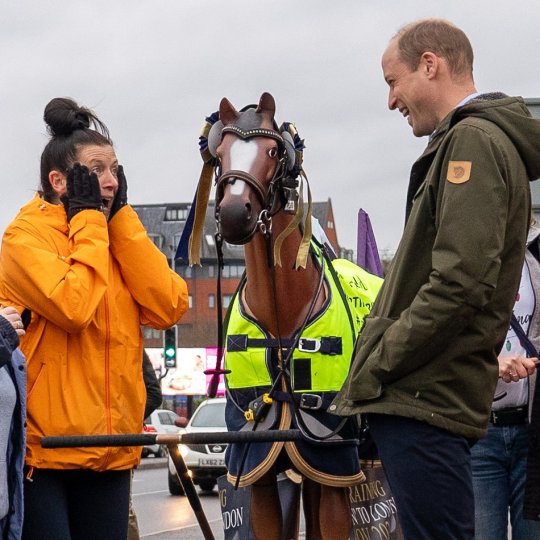
After her daughter Brodie's death by suicide in 2020, Emma Webb launched a suicide prevention campaign. Brodie was a talented equestrian, which is what inspired @thewebstermwebb’s challenge pulling a life-size resin horse 160 miles from Chepstow to London.

Sarah Goldson has directed the @Wimbledon Ball Boy and Girl training since the 2012 Championships. The training helps develop life skills among young people, with 280 BBGs selected from local schools.

Vaitea Cowan is a co-founder of @Enapter, a company aiming to account for 10% of the world's green hydrogen by 2050. Enapter won the Fix Our Climate category at the 2021 Earthshot Prize and continues to thrive.

Bianca Sakol is the founder and CEO of @Sebbys_Corner, a shop-style baby bank which believes no child should go without the basic essentials they need to thrive. They provide a warm, welcoming environment and gives families choice and dignity to choose the items they need.

Mother and daughter, Jennifer and Emilia Clarke, were awarded MBEs for their brain injury charity work. They are co-founders of @SameYouOrg, a charity which develops better mental health recovery treatment for survivors and raises awareness around rehabilitation.

Dr. Gubby Ayida has been the CEO of @EvelinaLondon since May 2023 and oversaw its opening of the new Children’s Day Surgery Unit last year.

Wendy Simm was born and raised in Moss Side, Manchester and founded ‘Keeping It Real 24/7.’ The food bank focuses on delivering culturally important foods to those in need, such as yams and sweet potatoes, which generally are not provided by other food banks.

Captain Preet Chandi is a British Army Captain who holds three world records for polar trekking, most recently in December 2023 for becoming the world's fastest woman to complete a solo South Pole ski expedition.

Barbara Smith is a psychotherapist who has served over 16 years with @BritishRedCross, offering psychosocial support in disaster and war zones, aiding those in trauma.
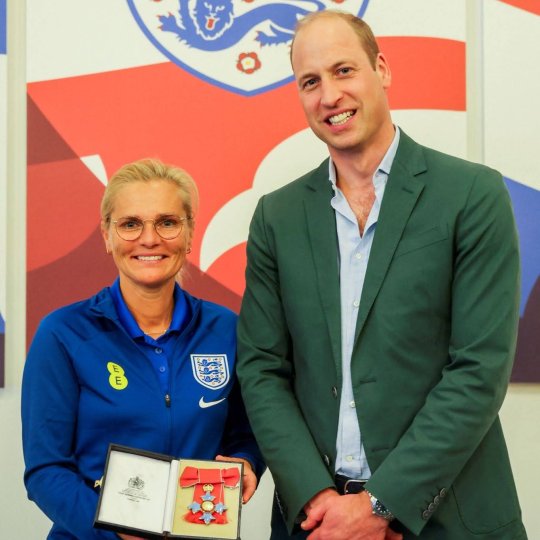
Sarina Weigman began her role as England Women’s Head Coach in September 2021, leading The @Lionesses to Euro 2022 victory. She was presented with an Honorary CBE in June last year.

Renee Salt is a Holocaust survivor who was born in Zdunska Wola, Poland in 1929. She survived both Auschwitz and Belsen, but her family did not. Renee has spoken to thousands of young people as part of @HolocaustUK's programmes.
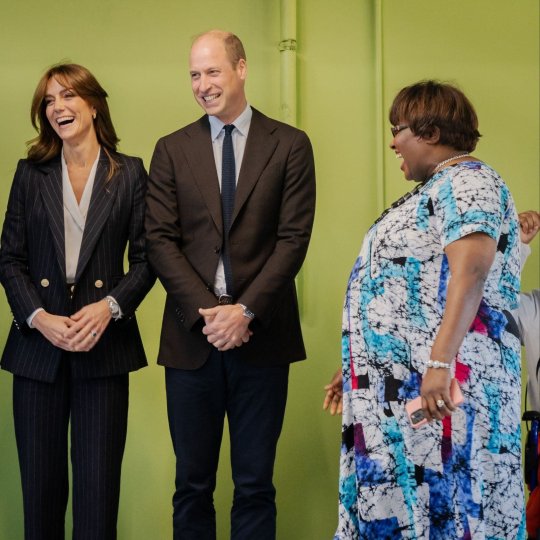
Professor Uzo Iwobi founded @rcccymru to boost art, heritage, and culture for minority groups in Wales. She empowers African Caribbean elders through learning initiatives and mentors young people to fulfil their aspirations.

In 2024, @hmsoardacious will be represented by Team Valkyrie, the first all-serving women's military team to row across the Atlantic. The @toughestrow challenge raises money for military charities and organisations that support veterans and their families.
- The Prince and Princess of Wales
#kensingtonroyal#international women's day 2024#prince of wales#princess of wales#kp twitter#kp tweets#8.03.2024#february24
32 notes
·
View notes
Text
Blowing Raspberries by u/Apprehensive-Year513
Blowing Raspberries
Jealousy is a green eyed monster over which one eats their own heart out. The Princess of Wales is obviously a big provocation for Meghan Markle. The jealousy she has for the next Queen is palpable, on full display. In 2020, Catherine had to celebrate her birthday with the news of Harry and Meghan "stepping back" from their royal roles. In 2023, Harry's fictional autobiography was released around her birthday. It's a well observed pattern that this couple cannot handle the Royal Family being in the headlines. They are predictable. This is a farce and a sham. It is sad that a woman in her forties is so threatened by another, resorts to grade school tactics. For all her speeches about feminism, she has no feminism for women she is envious of. Catherine committed the great sin of not wanting to be her worshipping best friend thus she must perpetually suffer the consequences. She has a functional husband, who is her equal and clearly is still smitten with her. Her children and family are absolutely besotted with her. She has a purpose and role in this world as well as the captivation of the international stage. She has everything Meghan doesn't have. She is everything Meghan is not and will never be. Meghan isn't fooling anyone except her cabal of toxic sycophants. Catherine bravely shares her health story along with the announcement of her attendance at Trooping the Colour. This was on the back of a relentless storm of bullying of where she in fact was, when anyone paying attention knew where she was; at home recovering from health issues. In an unsurprising fashion, more of Meghan's jam just happens to make an appearance. Raspberry jam from a business that has no products to sell, a business with the worst launch model imaginable. Jam can be purchased to support a local business not line Meghan’s greedy pockets. Meghan isn't seen for weeks and it's just another day. Catherine goes on medical leave and the press collectively loses their minds. Meghan has to be the pettiest woman in media. She also is without subtlety. To target a woman battling cancer is beyond the pale. She has no shame. Harry, who once had a close, warm relationship with Catherine lets his wife demean the sister he never had. They have thrown all benefit of the doubt out the window. This couple deserves each other. People don't support Catherine because they think she's perfect or above reproach. Catherine is appreciated for her dignity and steadfastness. She has an elegance for young girls to emulate, which Meghan lacks. Meghan complained the media was pitting the two women against each other when she is the biggest culprit of such. Many more plates have to be smashed to compensate that she will never have the love of the people. A problem she set in motion herself. At every opportunity, she blew it. In the old Vaudeville shows, a hook extended from off stage to pull away a bad performer. The world is laughing at this couple. They aren't respected or inspirational. They are mocked around the world. They have literally turned into tabloid parodies of themselves. Which is humorous given they take themselves so seriously as world leaders. They will never be in on the joke because they are the joke they have made themselves out to be. Laughingstocks green with envy.
post link: https://ift.tt/NevL85x
author: Apprehensive-Year513
submitted: June 16, 2024 at 04:51PM via SaintMeghanMarkle on Reddit
disclaimer: all views + opinions expressed by the author of this post, as well as any comments and reblogs, are solely the author's own; they do not necessarily reflect the views of the administrator of this Tumblr blog. For entertainment only.
#SaintMeghanMarkle#harry and meghan#meghan markle#prince harry#fucking grifters#grifters gonna grift#Worldwide Privacy Tour#Instagram loving bitch wife#duchess of delinquency#walmart wallis#markled#archewell#archewell foundation#megxit#duke and duchess of sussex#duke of sussex#duchess of sussex#doria ragland#rent a royal#sentebale#clevr blends#lemonada media#archetypes with meghan#invictus#invictus games#Sussex#WAAAGH#american riviera orchard#Apprehensive-Year513
19 notes
·
View notes
Text
Four years and a day ago, my sister picked me up so we could go to the hospital for news about my father.
I didn't know he was interned. I didn't even know he was that sick. Last thing I heard from his own mouth was that he was recovering from an ear infection and was feeling better.
I'd moved out a few months ago after he tried to beat me up in March because I didnt shower exactly at the time he asked, and after a lifetime of neglect and 18 years of other types of abuse from him and my stepmother. I had tentatively invited him for lunch the Sunday that had just passed.
Yet, I went. And I waited outside for news. At 8 pm the doctor came out to tell us he was refusing intubation but was hanging on.
At midnight, we went back home to sleep.
Next morning, we headed to the hospital at 6 to wait outside again for news. And we waited. The doctor came out. He said we needed to bring them supplies. I hated my father, but I raced down the concrete stairs of the hospital to pick up the supplies from my aunt. She held them out the window of her car, and I snatched them like a purse thief.
By 8:27 am that morning, July 11, 2020,.my father had died.
I had experienced death before. An uncle, family friend, my paternal grandparents, one after another, my own mother. I was familiar with decay, sadness, awkwardness, sunny funerals, the silence of the cemetery around you as the sky collapses on itself, and the world that keeps on moving. Turning, even if you can't stay still.
But somehow it never occurred to me that my father would die that soon, or so young, still in his mid sixties.
I had prepared for every eventuality. How to explain to him I don't want my future children to be much in touch. How I don't want his wife to know them at all. Thinking of moving far away, where he cannot hurt me.
My sister had to repeat this information twice. That he had died, I mean.
She had to confirm that I understood. She cried, and held me, and said "now its just us two, alone." I held her. What was there to accept? He had died. Whether I accepted it or not. I didn't cry much, just a few tears, so she wouldn't get too worried.
They didn't let us see his body, even from afar. The military wanted us a block away. People who lived in front of the hospital opened their homes to us so we could look through the window. They held my sister and I, even though for all they knew, we were dangerous.
It wasn't until his wake, where only us immediate family were allowed to attend, that I finally realized; something is wrong.
My father wouldn't have wanted a funeral like this. He was a devout catholic, for better or for worse (usually for worse). He didn't want to be cremated. He would have wanted a mariachi band, and have a procession with us walkimg after the hearse. He would have wanted the songs that were sung for my grandparents' funerals to be sung for him.
I cried a lot then. Almost to the point of not breathing. To the point of throwing up. To the point where words stopped making sense anymore. I didn't want to get off the car. Then, the opportunity for him to repent, the opportunity for me to have a father would be truly gone forever.
At the time, I didn't know I still relished that hope. I thought it had died, lile a fire put out in a panic, slap after slap. But it smoldered even without my knowledge.
It went out in a blaze of grief, when I held the wooden box that was his urn and I realized, I was holding everything my father had ever been, and everything he could have been, and everything he'd never be, because he'd never be ever again.
There are songs I can't sing now.
16 notes
·
View notes
Text
Anonymous asked: Of all the many languages you speak which is your weakest one? Do you use those languages?
It’s privilege to learn any language that isn’t your mother tongue. As Ludwig Wittgenstein correctly observed, “The limits of my language means the limits of my world”. If English is our native tongue we put ourselves at a disadvantage because we expect every other nationality to take the trouble to speak it. There seems no incentive to learn a foreign language. We become lazy not just in language but also in other ways including our cultural enrichment, our imagination, and a misplaced sense of our self-importance in the world.
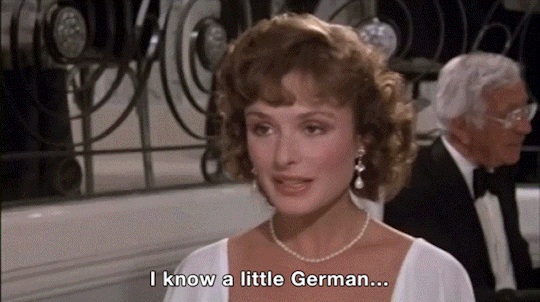
Of the European languages I know, I probably think German would be my weakest. When I was in school in Switzerland you’re brought up in three languages: French, Italian, and German (even if the Swiss speak Swiss German). When I say weakest I mean I can converse fluently, but I don’t have time to read German literature in the same immersive way I would say with French literature or take any special interest in German affairs.
I would say I’m fairly fluent in French now but still prone to silly mistakes. I’ve been told that I can speak without an accent and that is heart warming to know, because that was always the goal once I moved here to France. I don’t really use French in my work as it’s a multi-national entity and so English is the default language of corporate world, but I’m speaking French pretty much the rest of the time outside of work.
I was extremely fortunate to be born into a multi-lingual family where Norwegian and English were spoken from birth. All my siblings were being versed in Latin (not Greek which came years later after doing Classics at university) by the time I was 8 or 9 years old because my father was a classicist and he felt Latin was the building blocks to mastering other languages.
All this occurring whilst we moved lived and moved around a lot in the world such as China, Japan, India, and the Middle East. When I was initially sent to one of the first of my English girls boarding schools I was horrified that most of the girls only spoke English. I thought I was the stupid one for only knowing 6. Boarding school, if nothing else, gave me a great privilege to hone in on the languages I did know and start to learn others.
My parents didn’t take the easy way out and put us children in international schools like all the other expat children. That would have been too easy given how tight knit the British expatriate community was out there. Instead we were left to sink or swim in local schools in places like Tokyo and Kyoto in Japan or Shanghai in China or in Delhi, India. It was a struggle but you soon find your feet and you stumble towards some basic level of fluency.
I’m fortunate that before Covid my corporate work took me often to the Far East and it was a great opportunity to hone what I already knew. The result is I can converse and take business meetings in Chinese and Japanese (though English gets thrown into the mix too).
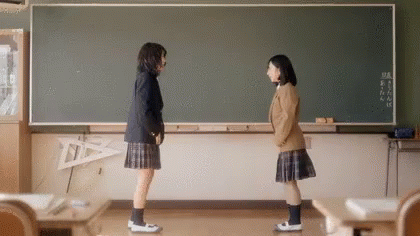
I would say Chinese is more of a struggle for me these days because I’ve not been back since before the Covid lockdown in 2020. Chinese is one of those languages that can easily melt away if you don’t get the chance to converse in it on a regular basis. Japanese less so, probably because the culture had more profound impact on me than Chinese culture.
Hindi is less of an issue because I have close Indian friends and also I watch Bollywood movies as well as converse with Indian immigrants here in Paris who have local stores. Urdu I learned through the backdoor because Urdu has a spoken affinity with Hindi (if you know Hindi then you know spoken Urdu, more or less, especially in Northern India and cities like Delhi where Urdu was born in the burnt ashes of Mughal India). Reading is another matter because they each use different scripts - Sanskrit for Hindi and Arabic and Persian script for Urdu.
Strangely enough when I was doing my tour in Afghanistan years ago with the British army, I would speak Urdu with local Afghans who served as official translators or were selling goods on the base. These Afghans knew Urdu because an entire generation of Afghan boys and girls grew up in refugee camps on the Pakistani border during the different phases of the Afghan war. I have very fond memories of their friendship and hospitality, but less so of the war itself.
With Arabic, it had lapsed woefully until I did a posting in Dubai in the past year (as catalogued in my blog) and I found myself suddenly remembering a lot and asking Arab friends. Soon I was able to hold my own amongst my colleagues and corporate clients. In these cultures it’s really hard to stay focused because so many of them speak very good English. So it’s hard to get them to stick with their own language because you want to learn from them - but they want to show off their English proficiency - and so you have to be polite but persistent to stick with Arabic.
If you’re learning a new language then I hope you stick with it. There’s almost nothing more rewarding in your life than the disocovery a rich culture through language. The key is to find a way to make it fun rather than a trip to the dentist chair for a root canal operation.

Thanks for your question.
85 notes
·
View notes
Text
In March 2019, TikTok agreed to a US federal court order barring the social media giant from collecting personal information from its youngest users without their parents’ consent. According to a new lawsuit filed by US authorities, TikTok immediately breached that order and now faces penalties of $51,744 per violation per day.
TikTok “knowingly allowed children under 13 to create accounts in the regular TikTok experience and collected extensive personal information from those children without first providing parental notice or obtaining verifiable parental consent,” the US Department of Justice alleged on behalf of the Federal Trade Commission in a complaint lodged on Friday in federal court in California.
TikTok spokesperson Michael Hughes says the company strongly disagrees with the allegations. He reiterates a statement the company issued in June, when the FTC had voted to sue, that many of the issues raised relate to “practices that are factually inaccurate or have been addressed.” Hughes adds that TikTok is “proud of our efforts to protect children, and we will continue to update and improve the platform.”
Lawsuits over alleged violations of children’s privacy are almost a rite of passage for social platforms these days, with companies such as Google, Microsoft, and Epic Games collectively having paid hundreds of millions of dollars in penalties.
But the case against TikTok also falls into the US government’s escalating battle with the service, whose ownership by China-based ByteDance has drawn national security concerns. Some US officials and lawmakers have said they worry about China exploiting TikTok to spread propaganda and gather data on vulnerable Americans. TikTok has refuted the concerns as baseless fear-mongering and is fighting a law that requires it to seek new ownership.
The complaint filed on Friday alleges that as of 2020, TikTok wouldn’t let users sign up on their own if they entered a birthdate that showed they were under 13 years old. But it allowed those same users to go back, edit their birthdate, and sign up without parental permission.
TikTok also wouldn’t remove accounts purporting to belong to children unless the user made an explicit admission of their age on their account, according to the lawsuit. TikTok’s hired content moderators allegedly spent just five to seven seconds on average reviewing accounts for age violations. “Defendants actively avoid deleting the accounts of users they know to be children,” the lawsuit states. Additionally, millions of accounts flagged as potentially belonging to children allegedly were never removed because of a bug in TikTok’s internal tools.
The lawsuit acknowledges that TikTok improved some policies and processes over the years but that it still held on to and used personal information of children that it shouldn’t have had in the first place.
Authorities also took issue with TikTok’s dedicated Kids Mode. The lawsuit alleges that TikTok gathered and shared information about children’s usage of the service and built profiles on them while misleading parents about the data collection. When parents tried to have data on their kids deleted, TikTok forced them to jump through unnecessary hoops, the lawsuit further alleges.
TikTok should have known better, according to the government, because of the 2019 court order, which stemmed from TikTok’s predecessor—a service known as Musical.ly—allegedly violating a number of rules aimed at protecting children’s privacy. Those rules largely come from the Children’s Online Privacy Protection Act, a law dating to the late-1990s dotcom era that tried to create a safer environment for children on the web.
Lawmakers in the US this year have been weighing a major update in the form of the Kids Online Safety Act, or KOSA. The proposed measure, which passed the Senate earlier this week, would require services like TikTok to better control kids’ usage. Detractors have said it would unfairly cut off some young populations, such as transgender kids, from vital support networks. KOSA’s fate remains uncertain. But as the case against TikTok allegedly shows, stricter rules may do little to stop companies from pursuing familiar tactics.
18 notes
·
View notes
Text

With 10-15 million Congolese murdered and countless others brutalized in Belgium's Congo Free State between 1885 and 1908, why isn't Belgian King Leopold I as reviled as slave traders, Stalin, or Hitler?
Treating the entire country as his own personal rubber plantation, Leopold forced even the children to slave away for his personal enrichment - and took their hands if the didn't work quickly enough.
Leopold I was the owner and absolute ruler of the Congo Free State from 1885 to 1908.
In 1885, the colonial nations of Europe authorized his claim by committing the Congo Free State to improving the lives of the native inhabitants. Leopold ignored these conditions and ran the Congo using the govt mercenaries for his personal gain. He extracted a fortune, initially from ivory, and later, by forced labour from the native population to harvest and process rubber.
Leopold's rule was characterised by atrocities, including torture and murder, from systematic brutality.
In 1890, George Washington Williams coined the term "crimes against humanity" to describe the practices of Belgium's administration of the Congo Free State.
The hands of men, women, and children were amputated when the quota of rubber was not met and millions of Congolese died.
In 1908, the reports of deaths and abuse, and pressure from international groups and the Congo Reform Association, the first mass human rights movement, caused the Belgian government to take over the administration of the Congo from Leopold.
The Congo was given independence in 1960.
Leopold's legacy has been debated frequently, but as late as 2010, Louis Michel, a Belgian member of the European Parliament and former Belgian foreign minister, called Leopold Il a "visionary hero."
In 2020, King Philippe released a statement expressing his "deepest regret" for the wounds of the colonial past, and the "acts of violence and cruelty committed" in the Congo during colonisation but did not explicitly mention Leopold's role in the atrocities.

Image:
Father stares at the hand and foot of his five-year-old.
He hadn’t made his rubber quota for the day so the Belgian-appointed overseers had cut off his daughter’s hand and foot. Her name was Boali. She was five years old. Then they killed her. But they weren’t finished. Then they killed his wife too.
•••
Con alrededor de 10 a 15 millones de congoleños asesinados y muchos otros brutalizados en el Estado Libre del Congo de Bélgica entre los años 1885 a 1908. ¿Por qué el rey Leopoldo I de Bélgica no es tan denigrado como los esclavizadores, Stalin o Hitler?
Tratando a todo el país como su plantación personal de hule, Leopoldo obligó hasta a los niños a trabajar como esclavos para su enriquecimiento personal y les cortaba la mano si no trabajan lo suficientemente rápido.
Leopoldo I fue el dueño y gobernador absoluto del Estado Libre del Congo desde 1885 hasta 1908.
En 1885, las naciones coloniales de Europa autorizó su solicitud al comprometerse con mejorar las vidas de los habitantes nativos del Estado Libre del Congo. Leopoldo ignoró estas condiciones y gobernó al Congo utilizando a los mercenarios del gobierno para su lucro personal. Él extrajo fortuna, inicialmente del marfil y luego por medio del trabajo forzado de la población nativa, quienes cosechaban y procesaban el hule.
Las reglas de Leopoldo estaban caracterizadas por atrocidades, incluyendo tortura, asesinato y brutalidad sistemática.
En 1890, George Washington Williams utilizó el término: “crímenes contra la humanidad” para describir las prácticas de la administración Belga en el Estado Libre del Congo.
Se le amputaban las manos y los pies tanto a hombres, mujeres y niños si estos no cumplían con la cuota de hule y millones de congoleños murieron.
En 1908, los reportes de los abusos y las muertes, y la presión por parte de los grupos internacionales y la Asociación de Reforma del Congo, el primer movimiento de derechos humanos masivo, causó que el gobierno Belga le quitara la administración a Leopoldo.
Al Congo se le dio la independencia en el año 1960.
El legado de Leopoldo ha sido debatido frecuentemente, pero en el 2010, Louis Michel, un miembro belga del Parlamento Europeo y previamente ministro extranjero llamó a Leopoldo un “héroe visionario”.
En el 2020, el rey Phillippe emitió un comunicado expresando “profundo arrepentimiento” por las heridas causadas por el pasado colonial y “los actos de crueldad y violencia” cometidos en el Congo durante la colonización pero no mencionó explícitamente el rol de Leopoldo en estas atrocidades.
Imagen:
Se puede observar a un padre viendo la mano y el pie amputado de su hija de cinco años.
Su nombre era Nsala y no había cumplido con la cuota diaria de hule, así que los supervisores puestos por los Belga como castigo le cortaron la mano y el pie a su hija. El nombre de ella era Boali, tenía cinco años de edad y la mataron. No solo lo dejaron ahí, sino que también mataron a la esposa.
#blacklivesmatter#blacklivesalwaysmatter#english#spanish#blackhistory#history#share#read#blackpeoplematter#blackhistorymonth#african history#congolese#congo#belgium#brutality#newpost#knowyourhistory#knowledge#monarchy#crimes#like#follow#historyfacts#black children matter#blackmenmatter#black women matter#weareblackhistory#europe#colonizers#independance
205 notes
·
View notes
Text

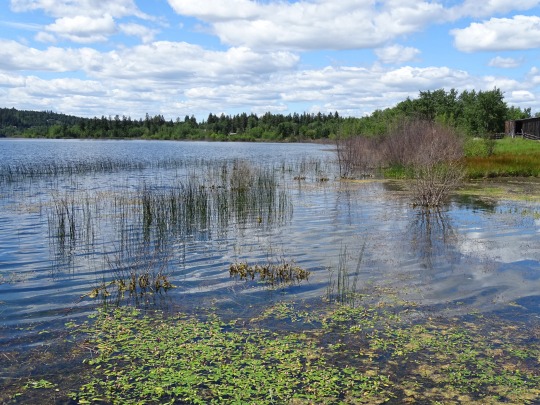
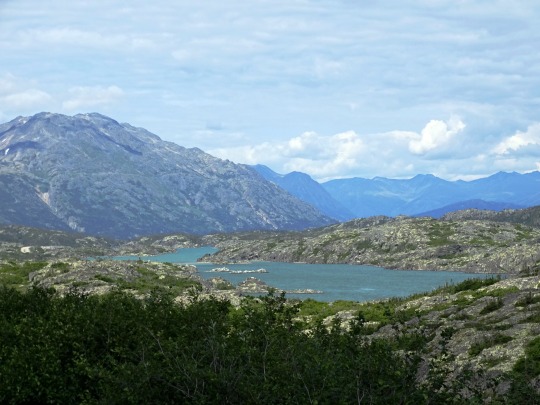


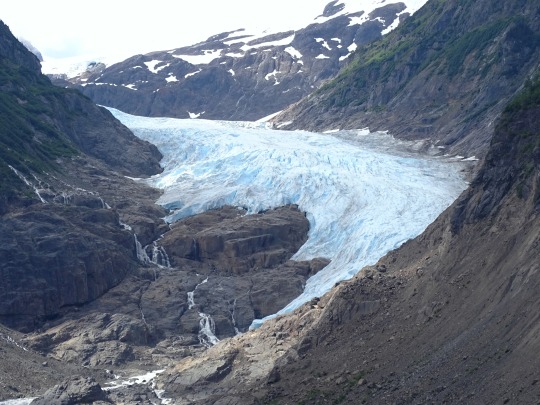


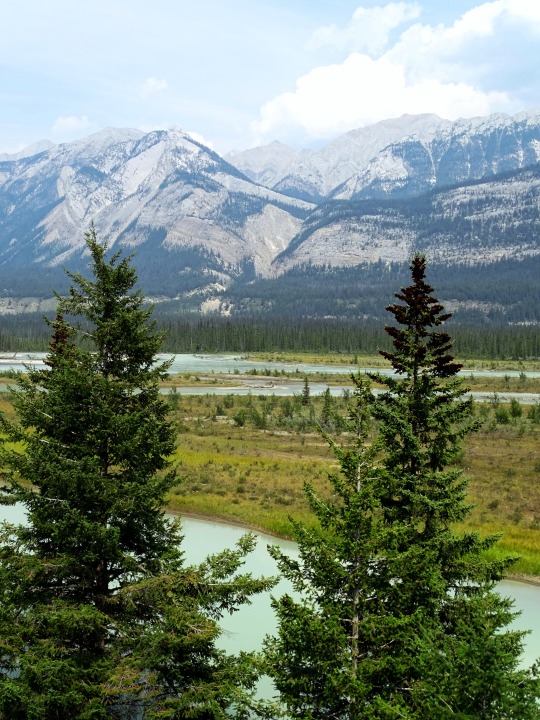


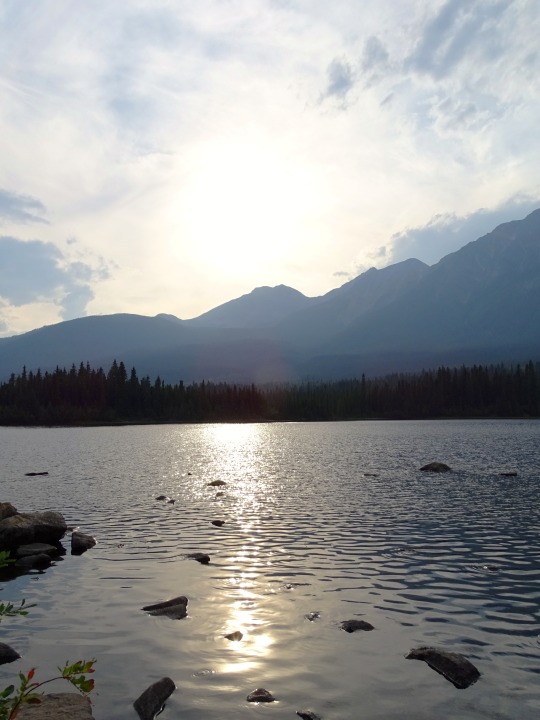



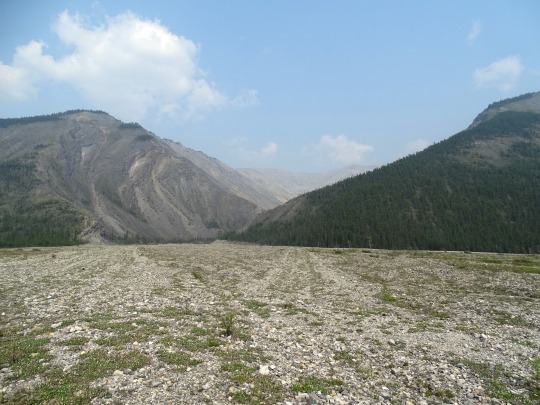

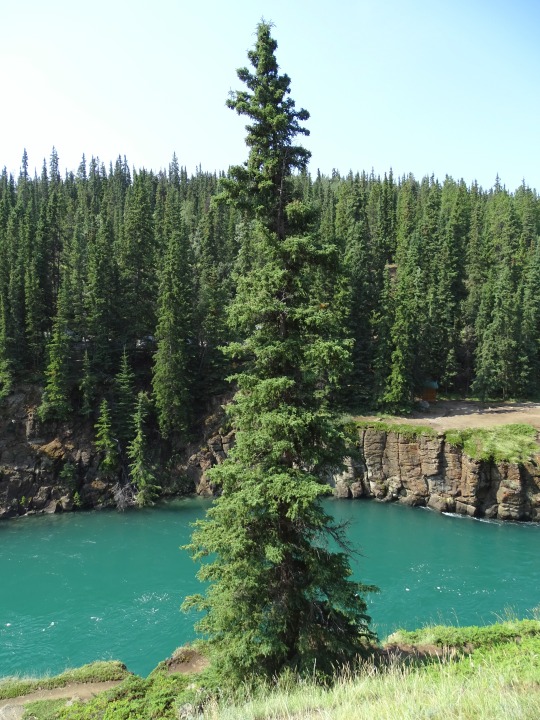
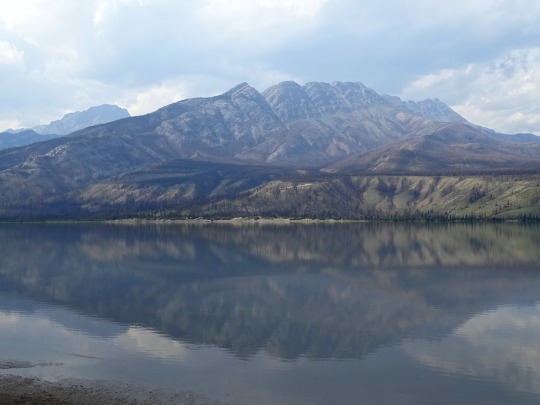

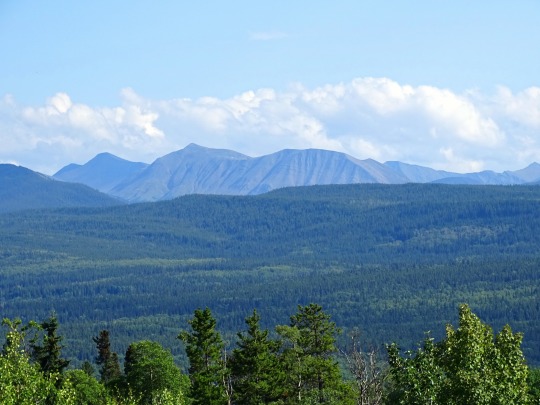
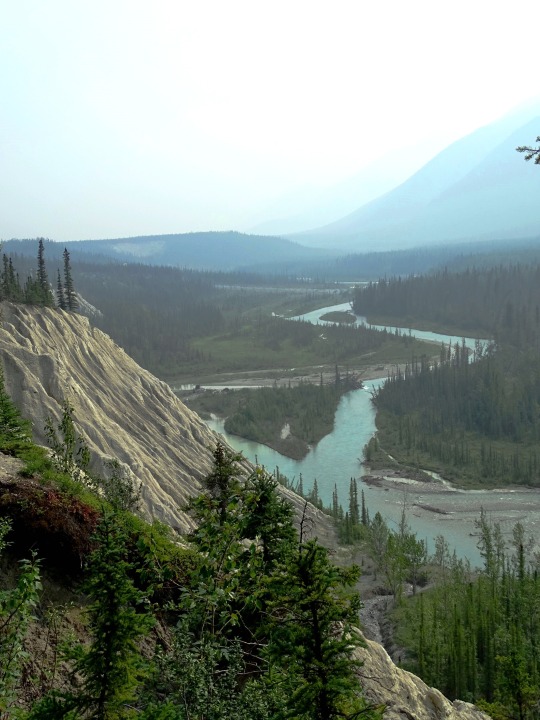
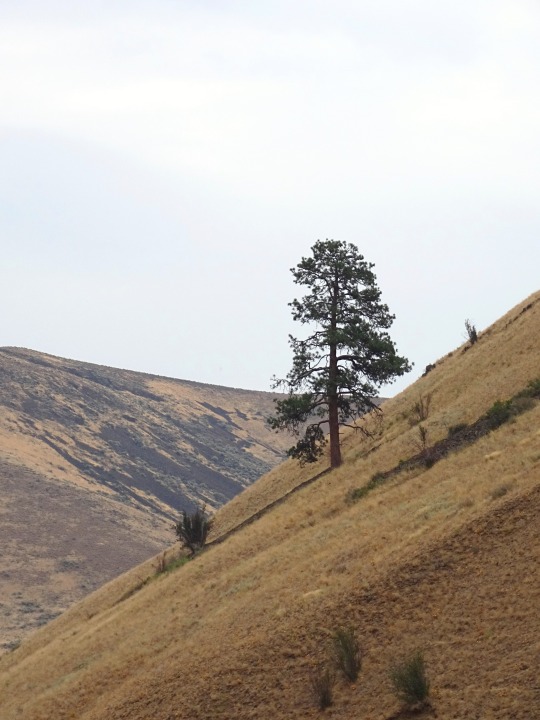
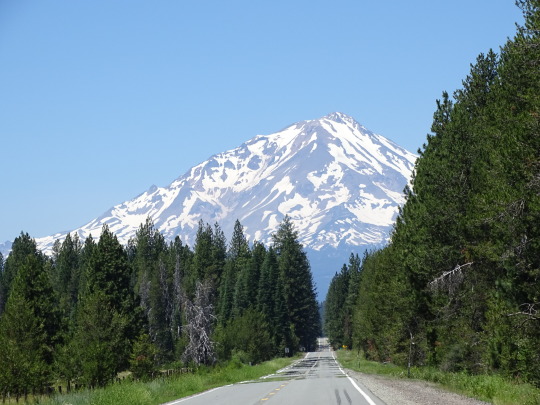

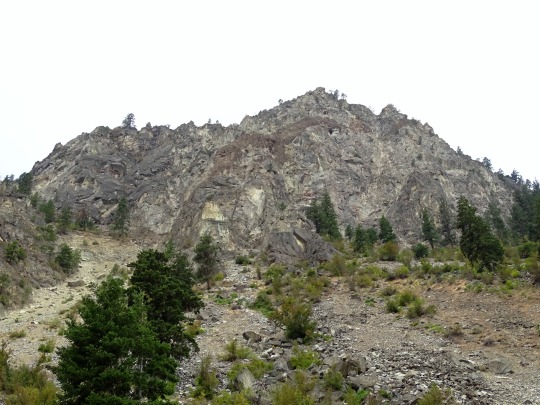


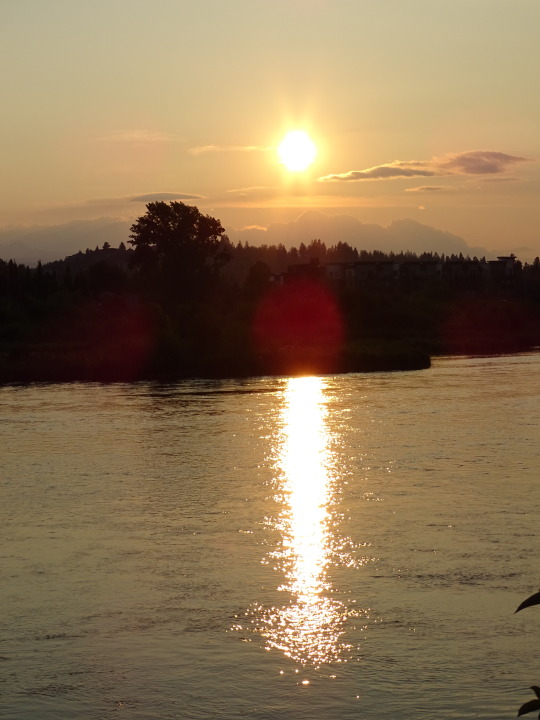

Earth Day
As threats to the Earth grow, so too do the global initiatives that seek to preserve it, whether through volunteer work, donations, or political lobbying.
Earth, due to human activity, is in trouble. The ozone layer is depleting, ecosystems are being lost and people are starving and dying of dehydration. Endangered species are disappearing rapidly, our water and air is becoming increasingly polluted, and weather systems are being pushed to the extreme.
A scary picture indeed, but thankfully one we can all do something about! Earth Day, one of the first global initiatives to protect and conserve the earth, has become an annual event that strives for positive change on a global scale. It aims to inspire individuals, communities, businesses and governments all over the world to take action and help preserve the planet.
History of Earth Day
As the world’s largest environmental movement and the most widely celebrated secular occasion, with over 1 billion people and more than 75,000 partners involved each year across almost 200 countries, Earth Day has gone from strength to strength over the course of its history.
Founder Gaylord Nelson, a former US senator, thought of the idea after witnessing the 1969 oil spill in Santa Barbara, California. Inspired by the vigor of the student anti-war movement, he believed it was essential that energy was shifted to concerns about air and water pollution.
Originally envisioned as a campus teach-in event, Senator Nelson enlisted youth activist Denis Hayes to help organize the first Earth Day in 1970, and the pair opted for 22 April due to where it fell in the academic year, ensuring that the maximum number of students would be able to take part.
Nelson, Hayes and their team were able to spread the message far and wide, including to the national media, and promote events across the US. The occasion was a massive success, with 20 million Americans taking to the streets to celebrate the first Earth Day. They demonstrated in support of the cause, and groups that had previously been rallying around environmental issues separately came together on the day due to their shared values.
The first Earth Day helped put environmental protection on the political agenda and bring about change. That same year the United States Environmental Protection Agency was set up, and soon after various legislation was passed, including the Clean Air, Clean Water and Endangered Species Acts.
It wasn’t until 1990 that Earth Day went global, spreading the message to 200 million people in over 140 countries. By the millennium it had reached more than 180 countries and involved hundreds of millions of participants worldwide. And of course the year 2020 marked the 50th anniversary of Earth Day.
2016’s Earth Day was a particularly special year, as it heralded the United Nations’ adoption of the Paris Agreement. Signed by 175 countries, this international treaty established legally binding targets for tackling the climate emergency, ensuring that as many nations as possible are working together to cut emissions and prevent global warming.
As a day of action, Earth Day aims to promote environmentalism through engagement, activism, education, policy changes and peaceful protest. It has focused on various themes over the years, such as climate change, trees, clean water and a healthy environment for children, and multiple organizations and venues host events that showcase the importance of caring for the environment.
This vital day teaches people about the consequences of their behavior on the places and ecosystems in which they live. And it’s not just about the damaging effects on the environment itself, but also about the impact on people’s health, access to food and water, safety and livelihoods. To get involved, people choose to make conscientious changes such as recycling more, using renewable fuel and conserving water.
Earth Day Timeline
1962
Rachel Carlson releases book Silent Spring
Raising public awareness for the plight of living organisms, Silent Spring makes its way up the New York Times bestseller list and sells more than ½ million copies in at least 24 countries.
1970
First Earth Day is celebrated
After witnessing a massive oil spill in California, Senator Gaylord Nelson from Wisconsin announces the idea of a teach-in on college campuses, choosing April 22 to fall between spring break and final exams to gain as much participation as possible. This bi-partisan event engaged 20 million Americans in working to protect the planet.
1990
Earth Day takes on the globe
Taking Earth Day around the world, just 20 years after the original event the participation increased ten-fold to include 200 million people from at least 140 countries.
1992
United Nations Earth Summit takes place
The United Nations Conference on Environment and Development (UNCED) meets in Rio de Janeiro to address issues of sustainability and provide opportunities for collaboration around the topic.
2000
Earth Day reaches record numbers
In celebration of the new millennium and the 30th anniversary of the observance, Earth Day includes 5000 environmental groups from 184 countries with activities all over the world.
How to celebrate Earth Day
There are a whole host of activities you can get involved in to mark this important occasion, not only around the globe but even in space! The Earth Day website allows people all over the world to find and share events designed to celebrate the day, from presentations and film screenings to cleanups and conservation efforts. This means that Earth Day enthusiasts can join things local to them or on the other side of the planet! And NASA often hosts an event from the International Space Station, for example livestreaming the image of our beautiful earth for all to see.
Another great way to celebrate Earth Day is by learning about what your actions do to the environment and why maintaining the earth’s ecosystems is vital to our survival. There’s a myriad of online resources – articles, quizzes, documentaries and so much more – to help us all find out more about our precious planet and the role we can play in protecting it.
If you feel able, why not donate money via Earth Day’s official website or to another environmental charity such as Greenpeace, the Rainforest Alliance or the Union of Concerned Scientists? Your support will help with a whole range of campaigns and projects, including pushing governments and businesses towards more environmentally friendly policies, preventing damaging practices such as deforestation and mining for fossil fuels and protecting those communities most vulnerable to the effects of climate change. You could also volunteer for local environmental groups and really make a difference where you live.
Above all, this occasion shouldn’t just be about one day, but rather a regular habit! Even the simplest of changes to our lifestyle can make a real difference. Switch to using an eco-friendly search engine, buy fruit and veg from the shop that isn’t wrapped in plastic, and put on an extra jumper rather than turning on the heating.
If you’re serious about the planet, then there’s plenty more you can do to live in a greener, more sustainable way, including powering your home with renewable energy, cycling and walking more and driving less (or buying an electric vehicle), reducing your meat and seafood consumption, recycling your waste, planting wildflowers in your garden for the bees and butterflies, and ensuring that your financial investments, for example, your pension fund, are contributing to green jobs and a green economy. Be sure to spread the word about National Earth Day through social media and let your friends and family know why protecting the earth is essential to you.
Earth Day FAQs
Is Earth Day international?
Yes! Although it is called Earth Day and it began in the US, the day is now celebrated and observed in a majority of the countries throughout the world–at least 193 countries.
How is Earth Day celebrated?
Individuals, groups, organizations and communities can all celebrate Earth Day by raising awareness, participating in sustainability projects, volunteering, making donations and so much more.
Is Earth Day always on April 22?
Yes! Ever since its inception in 1970, Earth Day has been celebrated annually on April 22. The original idea to reach college students made this the perfect time between spring break and finals.
Who created Earth Day?
Although the stage was set at the 1969 UNESCO Conference in San Francisco, the execution of the day can be credited to US Senator Gaylord Nelson who proposed an environmentally focused day for college campuses. The idea grew from there.
Where did Earth Day start?
The first ideas for Earth Day were formulated in the United States and meant to be observed as “teach-ins” on college campuses, but the idea quickly grew and it eventually turned into an international day including most of the countries on the planet.
Source
#travel#vacation#tourist attraction#landmark#InternationalMotherEarthDay#EarthDay#Earth Day#22 April#original photography#cityscape#landscape#countryside#Rocky Mountains#Alberta's Rockies#Northern Rockies#Canada#Alberta#Yukon#British Columbia#Oregon#Washington#California#USA#summer 2023#Jasper National Park#nature#flora
15 notes
·
View notes
Text

On this day in 2021...
R.I.P.
Go well … you have fulfilled your purpose 💕https://www.patreon.com/RunokoRashidi
RUNOKO RASHIDI
Runoko Rashidi is an anthropologist and historian with a major focus on what he calls the Global African Presence--that is, Africans outside of Africa before and after enslavement. He is the author or editor of twenty-two books, the most recent of which are My Global Journeys in Search of the African Presence, Assata-Garvey and Me: A Global African Journey for Children in 2017 and The Black Image in Antiquityin 2019. His other works include Black Star: The African Presence in Early Europe, published by Books of Africa in London in November 2011 and African Star over Asia: The Black Presence in the East, published by Books of Africa in London in November 2012 and revised and reprinted in April 2013, Uncovering the African Past: The Ivan Van Sertima Papers, published by Books of Africa in 2015. His other works include the African Presence in Early Asia, co-edited by Dr. Ivan Van Sertima. Four of Runoko's works have been published in French.
As a traveler and researcher Dr. Rashidi has visited 124countries. As a lecturer and presenter, he has spoken insixty-sevencountries.
Runoko has worked with and under some of the most distinguished scholars of the past half-century, including Ivan Van Sertima, John Henrik Clarke, Asa G. Hilliard, Edward Scobie, John G. Jackson, Jan Carew and Yosef ben-Jochannan.
In October 1987 Rashidi inaugurated the First All-India Dalit Writer's Conference in Hyderabad, India.
In 1999 he was the major keynote speaker at the International Reunion of the African Family in Latin America in Barlovento, Venezuela.
In 2005 Rashidi was awarded an Honorary Doctorate degree, his first, by the Amen-Ra Theological Seminary in Los Angeles.
In August 2010 he was first keynote speaker at the First Global Black Nationalities Conference in Osogbo, Nigeria.
In December 2010 he was President and first speaker at the Diaspora Forum at the FESMAN Conference in Dakar, Senegal.
In 2018 he was named Traveling Ambassador to the Universal Negro Improvement Association & African Communities League RC 2020.
In 2020 he was named to the Curatorial and Academic boards of the Pan-African Heritage Museum.
He is currently doing major research on the African presence in the museums of the world.
As a tour leader he has taken groups to India, Australia, Fiji, Turkey, Jordan, Brazil, Egypt, Ghana, Togo, Benin, France, Belgium, England, Cote d'Ivoire, Namibia, Ethiopia, Kenya, Mexico, Guatemala, Belize, Peru, Cuba, Luxembourg, Germany, Cameroon, the Netherlands, Spain, Morocco, Senegal, the Gambia,Guinea-Bissau,Vietnam, Cambodia, Thailand and Myanmar.
Runoko Rashidi's major mission in life is the uplift of African people, those at home and those abroad.
For more information write to [email protected] or call (323) 803-8663.
His website is www.drrunoko.com
6 notes
·
View notes